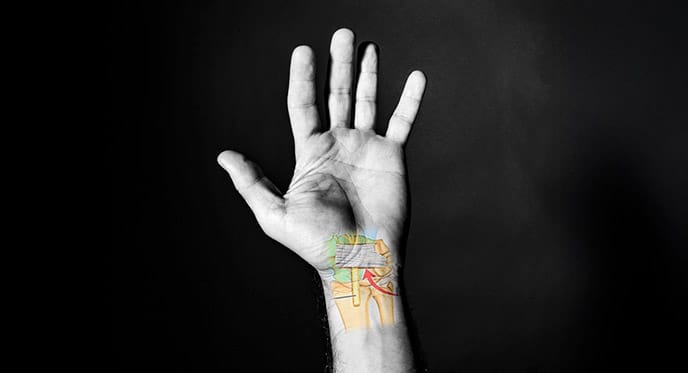
Carpal tunnel syndrome (CTS) is the most common peripheral nerve compression syndrome. It is caused by increased pressure on the median nerve as it passes through the 'carpal tunnel'.
The Carpal tunnel at the level of the wrist is formed of an arch of small wrist bones tethered together at the base by a strong fibrous band. In patients with carpal tunnel syndrome, the median is compressed as it passes through the tunnel, often due to the slowly progressive thickening of the fibrous band.
Patients can present with a variety of carpal tunnel syndrome symptoms, but the condition typically causes numbness and tingling in the hand initially, with weakness developing in some of the muscles of the hand.
Sometimes, pain occurs in the hand and wrist, and some patients describe symptoms throughout the whole arm, mimicking a trapped nerve in the neck. Symptoms are often more severe at night, and patients with this condition often complain of waking up from sleep. Driving, reading, typing, and holding a phone or iPad can also bring on the symptoms.
Diagnosis relies upon Neurophysiological examination although imaging studies are sometimes advised.